I will venture that it is no guess that most of our readers here on Survival Sullivan are familiar with the term “EDC”. For those few who are not, EDC means simply Every Day Carry shorthand for all of the items that one chooses to bring with them on their travels out and about.
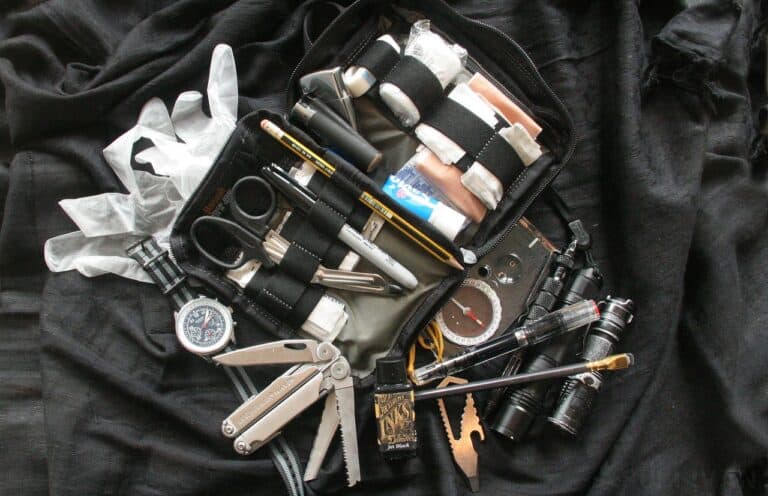
EDC gear encompasses specialty items like multi-tools and medical equipment, as well as more mundane items like your wallet, watch and keychain. If it goes with you, if it is something you habitually carry as a matter of course, it is part of your EDC.
There is plenty of conversation and instruction about EDC gear for close to home excursions, be it out to the mall or just for the commute to work, but I see significantly less talking about EDC gear for travel far from home, by plane, train or automobile.
This is a serious shortcoming in my mind, since we are significantly less capable in general the farther we are from our “home field advantage.”
Even the most homebound of preppers will travel a ways from home periodically be it for work, pleasure or some other errand.
Imagine this: 500 miles from home, in a city you are unfamiliar with, a major disaster strikes. You are cut off from easy escape back to your quiet, cozy home and all your fancy preps. You must make do with what you have with you, now, and go from there.
Can you do it? Or will you be facing the long dark and the uncertainty that comes with it starting from scratch.
Table of Contents
A Crisis at Home or Abroad
The simple scenario I just illustrated above is in many ways the perfect storm for your average prepper, at least one that they could conceivably face in their lifetime.
Far from home, far from your burrow with all your carefully laid gear, provisions and plans you get caught out. Something happens where you are or something happens elsewhere that prevents you from getting home easily. Things, as is said, just got real.
This exact scenario will be troubling enough if you are only responsible for yourself but it can be so much worse if you have family in tow. Worse yet, what will you do if they are home, and you are cut off from them? Gut check time: now we see what you are made of.
No matter who you are, the chances are high that you are simply not as well equipped abroad as you are at home.
The mode of travel may have something to do with this (you cannot bring all sorts of things on airplanes anymore) and it might have something to do with the area you are going to (some places in the U.S. and internationally frown on various implements being in the hands of the peasantry).
Oftentimes, though, it is simply because some folks switch-off “ready mode” when they are traveling. It seems to me that they sort of get into this fog, like being under a spell whereby they seem to think they are “off the clock” when it comes to personal responsibility.
This is a mistake. If anything you should be even more vigilant for all the reasons I mentioned above: on the off chance that something does go wrong, you will want the advantages that good gear gives you.
Remember the motto of the Boy Scouts- Be Prepared. You might have MacGyver-level improvisational capabilities, but improvisation is for those who are not prepared.
Yeah, yeah, you might have all your EDC stuff lost or stolen, true, but let’s try to make sure that is all the improvisation you have to do is in that instance, yes?
Travel Constraints
While you cannot ever really haul everything you want for preparedness sake with you when traveling, even if you are just constrained by what you can bring on your person and in a small bag that leaves lots of room for good gear that will make a difference.
The very first thing you should make a point to pack for your trip is your brain. Your mind is always your best asset assuming it is intact, and if are like one of the saps above who simply clock out, tune out and space out when traveling you need to rectify that post haste.
For the remainder of the advice I am about to dole out, I am going to make a few necessary assumptions. The first is that you are a competent, capable average prepper.
By this I mean you have some basic skills pretty much under your hat, make it a point to pay attention to your surroundings and make it a point to try and carry with you items that will make the most difference for the most likely situations you are going to encounter.
If you are brand-spanking new to prepping, much of this article will lack context for you. I’d recommend you take a look at some of the intro to prepping articles featured in abundance here on Survival Sullivan to get jumpstarted.
If you want to press on anyway, that’s great, maybe an upcoming travel plan made you think to get serious about preparing for it. Welcome aboard, but make sure to jot down any questions you have and look them up.
The reason you are traveling will not in all probability affect your choices of gear unless you are traveling into (or passing through) a seriously restricted environment, one that does not allow weapons or tools that might be used as weapons, for instance.
Ultimately, if you are heading out of state for a conference or just some R&R, whatever should happen that sees you pulling your gear out for real is going to unfold however it will. It is your choices now, in what you carry, that will help determine your level of readiness when that occurs.
What will matter on your itinerary is how you are traveling: are you driving? Taking a train? Flying? Is that private or mass transit?
Any public transportation will likely have certain restrictions on luggage or carry-on items, but the level of scrutiny you’ll be subjected to is different.
A charter bus will probably not even subject you or your luggage to anything that could be called security, while airline travel obviously involves intricate and serious security screening, with commensurate problems should you fail a check.
This most obviously impacts the carry of weapons and other tools that could be used as weapons.
In the next section, I am going to list my choices for travel EDC gear that I carry when traveling. I think many of these selections will work for just about anyone as a good base of support.
After the list, I’ll address some specific considerations for various modes of travel that could affect your gear choices.
The Traveler’s EDC List
The following edc list will strike some as excessive. Understand this is, by and large, what I carry every, single day whether I am working my “real” job or not. To me it is a pretty light getup.
A very small bag will hold everything I am not carrying on my body and then some. I probably travel lighter on my daily wanderings than some do. All of the following is entirely achievable for almost anyone.
The list is separated into two sections, items carried on or about your person and items carried in your bag, suitcase, satchel, purse or whatever it is you like taking with you out on an adventure.
Do keep in mind depending on how you are traveling that some items, often weapons, may have to be securely cased in your luggage, preventing immediate access to them.
I’ll talk more about that in the appropriate sections, but for now keep in the back of your mind that you might be moving stuff around depending on how you get to where you are going.
Here’s a quick table with all of the items first…
| Passport | Flashlight |
| Knife | Multi-tool |
| First-Aid Kit | Phone |
| Charging Cables | Power Bank |
| Bandana | Money Belt |
| Lighter | Backpack / Briefcase |
| Water Bottle | Water Filter |
| Compass | Maps |
| Headlamp | Rechargeable Batteries |
| Snacks | Coffee or Tea |
| Hatchet | Notepad, Pens, Markers |
| Pocket Encyclopedia or Regional Survival Guide | Extra Clothing |
| Dry Bag | Zip-Loc Bags |
| Cordage | Duct Tape |
| Hygiene Kit | Toilet Paper |
| Sanitizer | Gloves |
| Carabiner | Burner Pre-Paid Credit Card |
| Wad of Cash | Pack of Cards |
| Adjustable battery charger |
EDC Gear: Pockets, Beltline, Etc.
Passport
You don’t want to go anywhere without your passport, especially if you are a wanderer, world traveler or other globetrotter that has to move around a lot for work, pleasure or other reasons.
State and federal issue IDs are fine but for truly proving who you are and establishing your bonafides nothing beats a passport.
I make it a point to keep mine on me at all times if I’m going any farther than state lines. you never know who you’ll be interacting with, or what agency you’ll be interacting with, where you might need multiple forms of ID to establish your identity.
In our era of ever-increasing bureaucracy you’ll probably soon need three forms of identification just to buy a gallon of milk, but until such time always bring your passport with you when you are traveling any distance away from home for any reason.
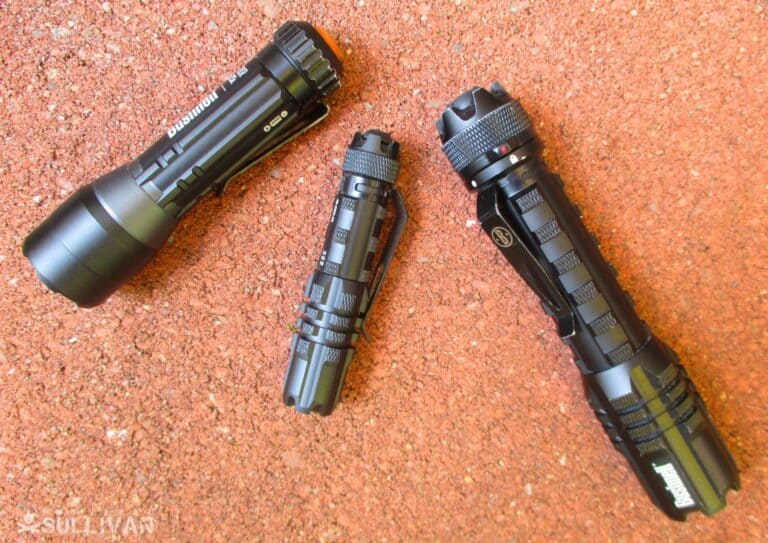
Flashlight
Get a good one, not too big, plenty bright and with a good runtime. Use of common batteries is a must.
You’ll use this for a million common tasks, and it has plenty of emergency uses, everything from blackouts to signaling to threat identification and more.
A large-ish model also works pretty good as a fist load for socking people with. Don’t go anywhere without it!
Knife
A small fixed blade or larger folder. I actually recommend you carry two knives, one for serious business (self-defense or emergency cutting) and the other for chores. If you carry a multi-tool that has support blades that works also.
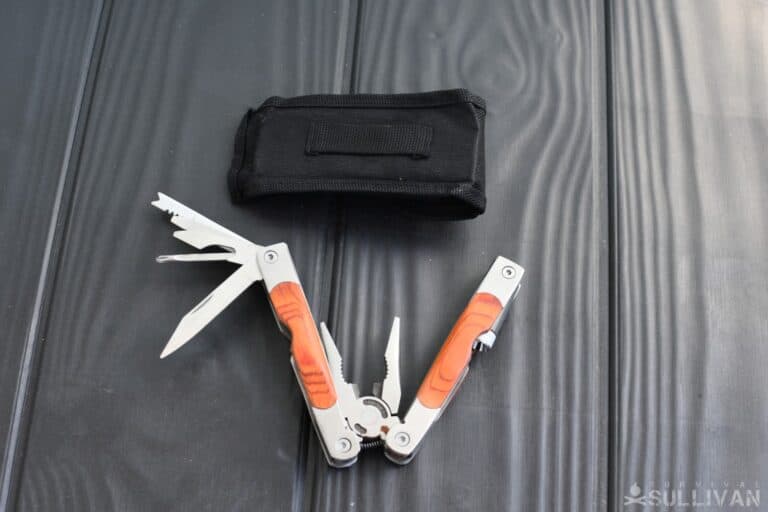
Multi-tool
A multi-tool should be your constant companion whenever you are traveling.
Considering that you definitely are not going to be dragging a proper tool chest full of tools with you, the ability to handle the most common tasks with one, compact and reasonably efficient do all is invaluable.
A good multi-tool should contain pliers, various screwdrivers, bottle opener, can opener, tweezers, scissors and the like. There are so many multi-tools on the market you can have one that will fit any budget, any requirement and any size limitation.
Leatherman and Gerber make good ones as usual with Victorinox producing what is probably the “Cadillac” of them all. I still like the quintessential Swiss Army knife, myself.
Want to hang up that you might have to deal with if flying, taking a train or going by some other regulated conveyance is the fact that you won’t be able to carry certain implements, namely knives, aboard unless they are in checked luggage.
Make sure you do your homework, and get any assurances in writing. I can’t tell you how many people I know who have lost a prized multi-tool to the grubby, blundering mitts of lowest common denominator TSA agents.
First-Aid Kit
Real first aid, not just a wimpy case with a few bandages in it. With all the carnage and chaos going on out in the world, it pays to be ready to close up wounds as well as create them.
Make sure yours has a tourniquet or two, Quik-Clot gauze, gloves and other goodies for serious trauma as well as a small boo-boo kit. I like to carry mine on my ankle in a purpose-made rig. For the record, I have never been stopped carrying this onboard an airplane.
Phone
Now is not the time to be a luddite. Smartphones are modern, technological marvels that afford travelers tons of capability on the fly, and you would be foolish to leave the house without one especially when you are heading into the unknown.
From managing your tickets and other travel itineraries to helping you orient yourself with maps, directions and nearby resources, the smartphone is an elegant and highly capable personal guide for every traveler.
However, you should take it upon yourself to travel-proof your smartphone against unwanted intrusion directly or wirelessly.
Control over network access, pairing, bluetooth functionality and so forth is absolutely imperative, and if you are heading into an area that is known for electronic eavesdropping and data sifting you should likewise invest in a “Faraday” bag or other signal-blocking container.
It must be said again, never, ever plug in your phone to those free or pay to use airport charging stations, as time and time again we have seen that they take things off of your phone or put things into it. You have been warned.
As always, you don’t want to be completely dependent upon your smartphone or any other electronic device for that matter but it is foolhardy to give up the capability when it is available to you.
Maximize and harden your smartphone for travel and it will be a worthy companion.
Cables
If you have a cell phone or any other modern rechargeable device, from a flashlight or a headlamp to a power bank you’ll need all the associated cables if you want to connect them to chargers or to other, associated devices.
Although USB connections are pretty much the de facto standard today, the variety among such connectors is far from standardized.
Legacy, full size USB, USB C, Micro USB, and so on mean that you might have cause to attempt a little bit of jury rigging in order to get some precious power flowing to your gear.
For this reason, even if all of my devices are standardized I like to carry a couple of spare cables and appropriate adapters to make use of other sending or receiving connections if required.
You never know when you’ll need just that one right cable to save the day, and they are so light, small and easy to carry there is no reason not to have them.
And just for safety sake, once again you should never, ever plug in your phone or any other device into a free or paid charging station at an airport, or at the very least don’t do it without a USB condom on your cable to prevent the transference of data one way or the other.
Power Bank
I am deathly afraid of running out of juice at an inopportune time, so have taken to carrying a 5,000mAh backup battery. The latest models are as slim as or slimmer than my phone, so I keep this in the pocket opposite the phone for ballast with a five foot USB wrapped around it.
If traveling through airports, rail stations or other mass transit site, you can also keep your phone from getting AIDS thanks to those sketchy pay-to-power charger stations.
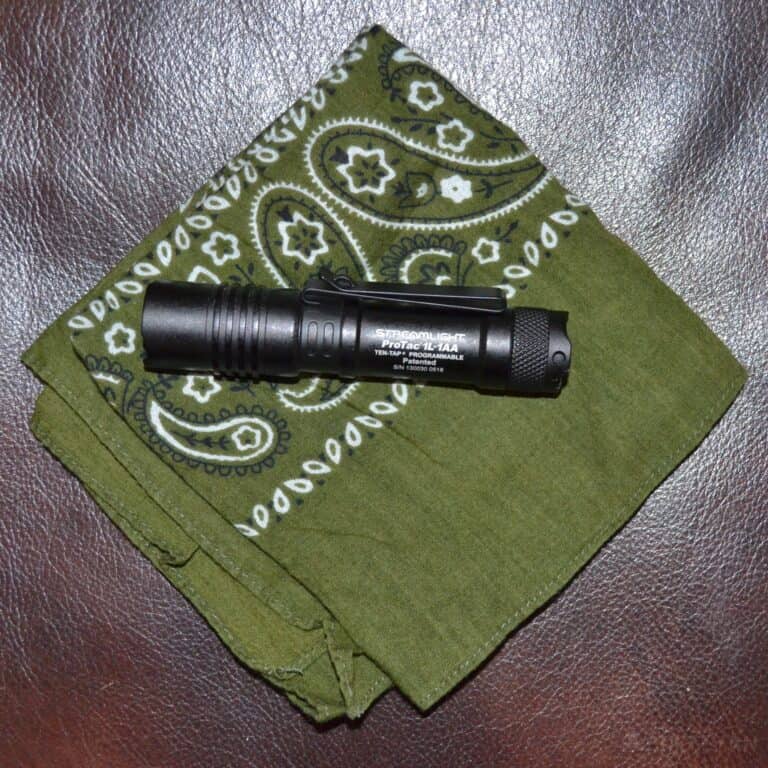
Bandana
My love for this lowly piece of gear is well documented here on SS. A bandana obviously serves its intended purpose as a multi-use garment, but it can be used as a rag, hanky, sack, lashing and so much more in pinch.
Keep in mind a folded and rolled bandana with something dense and weighty in its center (a padlock) makes for a handy improvised flail.
Money Belt
One of my favorite travel security items whether I am at home or abroad is a good money belt, or even a conventional belt that is modified for the purpose.
Long a sort of weapon of choice for defense against pickpockets and other opportunistic thieves, a money belt has additional utility as a defense against mishap and misadventure.
You don’t have to get pickpocketed or fleeced of all your money to be left stranded high and dry.
Something as innocuous as misplacing, dropping or forgetting your wallet could see you short of cash at a crucial moment, as could any kind of disaster or other event that separates you from the bulk of your resources.
Even if you are traveling exclusively in prosperous, modern, Western areas where the use of electronic currency or electronic access to paper currency is ubiquitous and all but assured you must assume that something bad will happen to put an end to all of that.
In that case, cash speaks and wearing a money belt that is attached to you as few other articles of clothing are with a nice stash of greenbacks and it will be cold comfort. Get one, wear it, end of discussion.
Lighter
You just never know when you might need to start a fire. I keep a Bic on me and more in my bag as insurance. In almost any environment you cannot beat the reliability and ease of a lighter for getting a blaze going quickly.
2nd Line EDC: In Your Travel Bag
I consider my travel bag analogous to a lightweight Go-Bag. I want to keep this thing on me. For road warriors, this means the bag that rides with you in the cabin.
For fliers of the friendly skies this is your carry on. Again, you might be forced to keep some things in luggage, but this is the part of your baggage train that should stay by your side if at all possible.
Backpack / Briefcase
Whatever reason you are heading out of town for, you want to bring luggage with you, even if you are traveling ultra light. Chances are that you will, in fact, have things that you are carrying but even if you aren’t, you might suddenly find things that you need to carry.
Depending on your aesthetic and requirements, a backpack or briefcase can do the job. backpacks are undeniably utilitarian, comfortable and useful but they are also not professional unless you’re profession is soldiering, something outdoorsy or you are a student.
A briefcase, a proper one with the volume to carry what you need, might be a better choice depending on the image you need to project.
another alternative and one that I make use of regularly is a collapsible or “stuffable” backpack that takes up hardly more room than a pair of rolled socks but can be deployed to greatly expand my cargo capacity when required. Gray Ghost Gear makes one of my favorites.
Water Bottle
Keep it filled. For travel, especially travel into remote, arid or austere environments I like to keep one with an integrated filter on me so I can make immediate use of any water source I find without running the risk of bubbleguts or worse.
Nalgene is my preference, but there are lots of good ones out there. A metal one with no interior liner has the advantage of allowing you to boil water in it in a pinch.
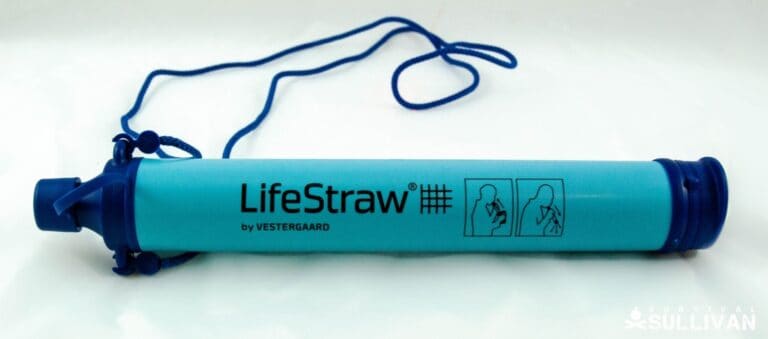
Water Filter
Even with my built-in filter on the bottle, I still like having a super compact version with me to access water that I cannot get into my bottle, and as a backup. LifeStraw is an obvious choice here for its performance to size ratio.
Compass
Depending on your skill and preference, a field or button compass is suitable. Some folks have an excellent innate sense of direction (really direction keeping…) but most don’t.
Learning a few major landmarks plus having even basic direction finding capability can keep you from heading the wrong way if you need to move in a hurry.
Maps
For the same reason you carry #2. Keep at least one decent map of your destination area in your pack. Topographic will make sense for some areas, city or road maps for others. I strongly recommend you waterproof them in some way.
Headlamp
When it is time to go hands-free, nothing beats a headlamp. They aim where you look! At any rate, this can serve as your secondary illumination source. If at all possible see to it that it uses common batteries, preferably the same as your flashlight you keep on your body.
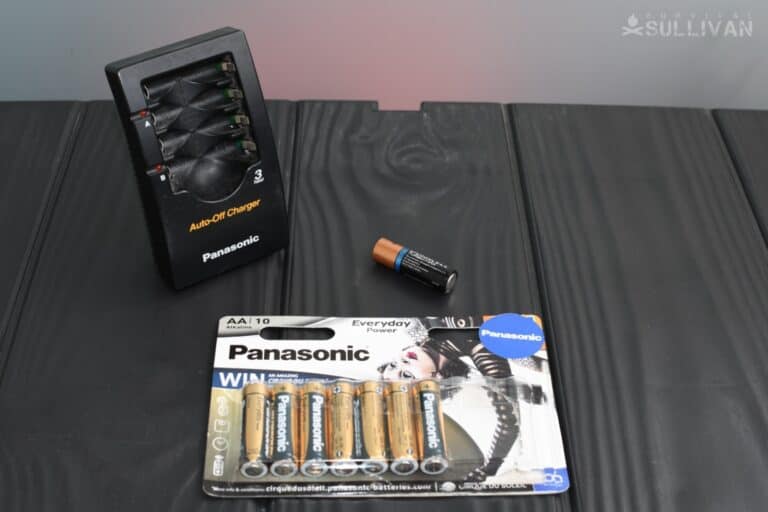
Batteries
Flashlights and headlamps don’t run on wishes. Make sure you have a good supply of batteries in a carrier stowed in your bag. Don’t let them roll around loose.
A quick word on quality: no matter what you might have read, seen or been told, batteries are not all the same. Novel concept, I know.
Cheapie Amazon-basics or Sunbeam batteries you can buy in a 500 pack for the cost of a Big Mac might sound like hoarding nirvana, but they are woefully lacking compared to top-shelf Surefire, Duracell and Energizer batteries.
Especially when buying lithium batteries, QC and QA are important. Don’t risk a meltdown or being left in the dark by buying inferior batteries.
Hatchet
A small tomahawk or camping hatchet. I really like having one handy for getting into or out of a vehicle quickly as well as for its intended purpose of chopping wood and so on.
A great tool to have handy, and if you get a model with a flat or protruding hammer poll opposite the blade you will be able to hammer and pound nearly as good as you could with a real hammer. Of course they also make for good melee weapons…
Notepad, Pens, Markers
You ever know what you’ll need to jot down, sketch or record. Phones are super handy for this but I don’t like the idea of burning up-time for simple notes and such. I greatly prefer weatherproof paper pads and either a similar pen or pencil for all weather note taking.
I also always have a permanent marker as part of my kit I case I need to scrawl a permanent message or warning on something, and these are also vital for marking anyone you apply a tourniquet to.
Pocket Encyclopedia or Regional Survival Guide
When all networks are down, when the power is out, and you need answers these things are great. Containing an abundance of useful info, everything from first-aid procedure to maps to hand signals for operation of heavy equipment.
Extra Clothing
I am a die-hard on this one. There will come a time when you are traveling you need either extra insulation or just a change of clothes. Mishap, misadventure and mayhem come in all shapes and kinds.
Maybe you get stuck in bad weather and are soaked or cold. Socks and another shirt, maybe a beanie, can help. Wet boots? Change your socks. Rolled the dice on gas station sushi? You’ll be glad for fresh underwear, believe it.
Dry Bag
You might be caught in the rain. Do you want your stuff to get ruined? Of course not. Put the important stuff in your dry bag. Also works great for containing stuff that is sopping wet, soiled or otherwise nasty that you cannot leave behind.
Zip-Loc Bags
For compartmenting your things, carrying water in an emergency and many other uses. These are seriously tough. Make sure you get the kind without that dumbass slider tab that always pops off.
Cordage
No prepper worth their salt leaves their home without a little paracord. If you want to save weight, 6mm or 7mm accessory cord is just fine for most tasks.

Duct Tape
Duct tape will make short work of nearly any task that need something held in place.
Duct tape also helps you fashion weapons from something as innocuous as a magazine or a roll of coins. For repair, rigging and general craftiness, nothing is better while you are on the go.
Hygiene Kit
Staying clean on the go is a great morale booster, but is also imperative in a survival situation. You don’t need to haul your whole primp-and-preen kit with you.
The basics- deodorant, toothbrush, toothpaste, powder, etc. are fine. I bring a compact shaving kit because I am just not happy without one but that is just me.
Toilet Paper
A small pack or flat-fold of toilet paper should be included for obvious reasons. If you get caught without it you’ll rue the day and probably have to kiss your bandana or a sock goodbye.
Sanitizer
Travel means exposure to novel germs, or just lots and lots of familiar ones. Seems everyone who travels gets sick. I don’t want to be one of them so I keep the hand sanitizer flowing freely.
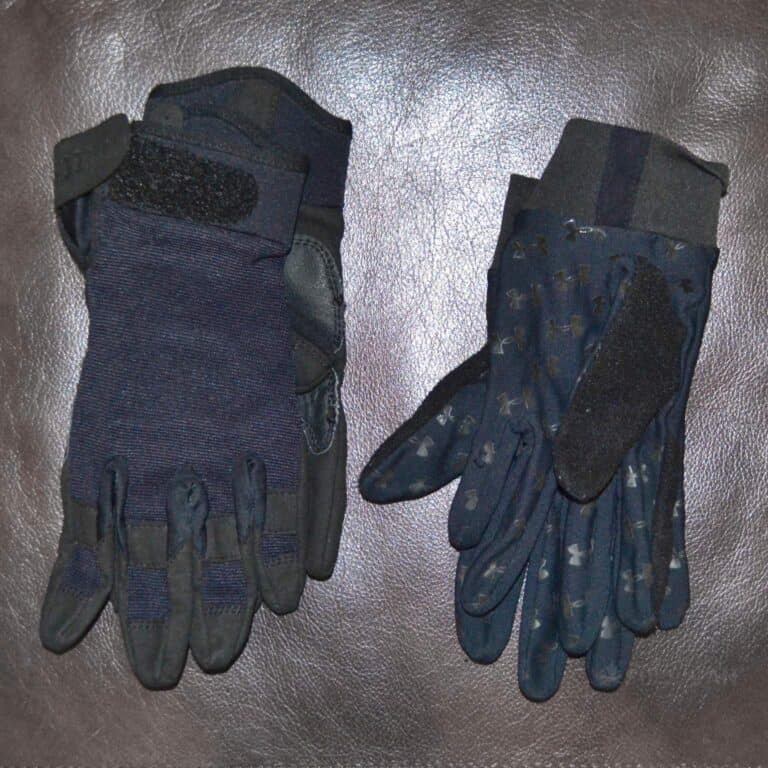
Gloves
For dealing with sharp debris that could lacerate you, a little extra warmth or just keeping your hands protected, gloves are where it is at.
Dealer’s choice here; some folks prefer the heavy duty cotton or leather work gloves while others like the thinner, dexterous technical gloves. Make the call depending on your preference.
Snacks
Something palatable that is easy to eat and stable. If stranded or really working hard you’ll be glad you have the calories. Beef jerky, nuts, trail mix, energy or meal replacement bars are all good choices.
Coffee or Tea
For energy and a little pick-me-up when things are grim. If you have, or can create, hot water you are golden.
Carabiner
For attaching things to other things or making yourself a tie-off point, these are great. Get yourself a quality steel one that locks closed and they make pretty good fist loads.
Burner Pre-Paid Credit Card
I really hate throwing around my proper credit cards when traveling. To that end, if I am ever going into sketchy areas I will make use of a pre-paid credit card for the purpose.
It serves to compartment my losses if stolen or some dirtbag tries to abscond with my identity.
Wad of Cash
In tying times, desperate times, terrible times cold hard cash will get you things you cannot get in any other way. I know some folks will balk at this as a huge vulnerability, but this is not something I am flashing or making purchases with.
This is to ensure I can still make use of options in an uttermost extreme, whether I need a ride, a vehicle, a weapon or just a favor.
Pack of Cards
You’ll know when you need these. Great for passing the time, as a social lubricant and for tossing at a hat. If you know a few magic tricks all the better.
Packing Light and Tight
Looking over the list of all the items shared above you might have concerns that you’re going to be toting a metric ton of gear in equally large and bulky luggage.
This is a worthy concern, not the least of which because checked baggage fees are tantamount to highway robbery these days, but also because going light, slick and quick is always a benefit if possible.
If you are like most people, you probably pack your luggage and especially your carry-on in a way that makes sense to you, but this does not mean it is the most efficient or compact way to pack.
By far the most meaningful method for preppers is to pack everything as tightly, nested and efficiently as possible with ruthless disregard for orderliness.
Do this right and you’ll still have easy and reliable access to things while you are on the move, be it at the airport, and your personally operated vehicle or any other conveyance.
This means things like:
- snacks,
- water,
- certain tools,
- documents,
- electronics,
- chargers
- etc.
… should be reserved for exterior pouches, the uppermost section of compartments and anywhere else that it makes sense to stash your gear, potentially even hung on the outside with a clip if circumstances permit.
Additionally, I highly recommend you perform a personal audit of your gear and consider downsizing it if possible.
Some items can be broken down for more efficient transport, where others can be replaced if financially feasible with smaller, lighter and all around better options that are far kinder to travel with. Every cubic centimeter and every ounce saved is a virtue!
Dealing with Obstacles and Item Restrictions
traveling is often resplendent with obstacles these days, especially if you are going via any service or industry that is regulated by domestic or foreign governments.
In the United States, citizens have long endured the grinding, bureaucratic ministrations of the transportation security administration and it’s minions.
This means you won’t be able to carry liquids and various solids above a certain, tiny size with you, no knives, definitely no weapons and you’ll have to subject yourself to tedious, meaningless security searches that force you to take off your shoes, remove belts, unpack luggage, and other such indignities.
All in the name of safety! Precious, precious safety!
While this is, in a word, total bullshit you can ameliorate the worst of these obstacles by ruthlessly screening your carried items for anything that might pop up on their radar well before they do they screening at the Federally mandated checkpoint.
Additionally, you can apply for and obtain preferential, priority screening at security checkpoints it will speed you along without the need to go through certain procedures that the rest of humanity is subjected to.
I can tell you for my own experience but this is absolutely worth The upfront time, effort and aggravation to obtain particularly if you are a regular traveler for any reason.
If you’re going by a personally owned vehicle or some other method of transportation that will not subject you to such screenings, bear in mind where you’re going and the notion that you might be screened or subjected to inspection when crossing a border, entering a sensitive area or for any number of reasons.
Considerations for Mode of Travel
Driving
Driving usually presents the least equipment restrictions of all modes of travel, unless you are crossing international borders where certain items may become an issue.
Taking a car also has the boon of giving you plenty of room for even more equipment, above and beyond your EDC load. Large items are no problem.
A standard vehicle survival and roadside emergency kit consisting of tools, parts, blankets, flares, food, some water and more should be mandatory. Don’t do it by halves, people.
Flying
Flying is fast, efficient, and statistically safer than driving, but unless you are going private you’ll be forced to endure the fondling and chicanery of the TSA, and that means no weapons or anything that is obviously weapon-like.
Your tactical pens, carabiners, rolls of coins and other improvised weapons will have to suffice until you make it to your destination.
A single brass casing or forgotten magazine is going to ensure you have a really bad day, miss your flight and get harassed even more by these overpaid, under-qualified clowns that make up this sham of an agency. No mistakes!
Trains
Traveling by train can be a fun and easy way to do it, but you will have to endure a similar level of scrutiny to flying if you are going Amtrak.
Until a decade ago, Amtrak did not allow firearms even in checked baggage, but that is not the case today though you still cannot have weapons in the passenger cars. You can have all your need to improvised weapons we have discussed throughout this article, however.
REMEMBER: No matter how you are traveling it is up to you to know the laws of your destination backward and forwards lest you unwittingly bring banned items with you. If you get caught, ignorance will not be a defense.
What’s In Your EDC Travel Kit?
Travel presents unique challengers for choice of EDC equipment, but with a little more planning and forethought you can carry the gear that will help keep you safe in the event disaster strikes while you are far from home.
Take the time to plan your itinerary and determine what the most likely threats are, then filter your requirements through any possible restrictions involved due to your destination and mode of travel. Use this list as a starting point for your own traveling EDC loadout.
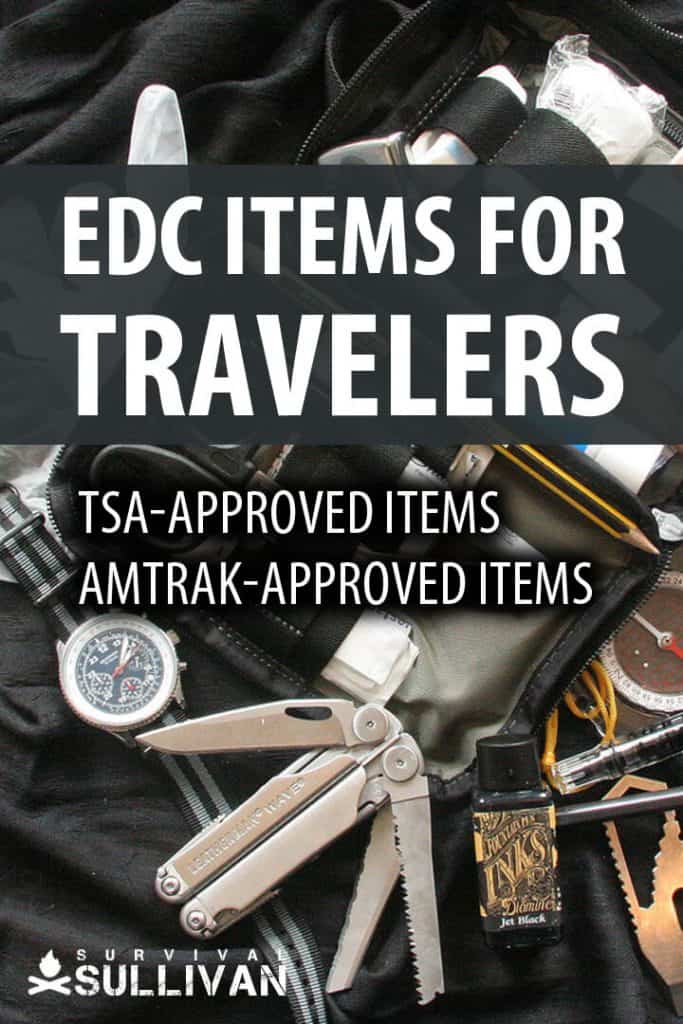

Charles Yor is an advocate of low-profile preparation, readiness as a virtue and avoiding trouble before it starts. He has enjoyed a long career in personal security implementation throughout the lower 48 of the United States.

i’m going on a cruise this summer and guns aren’t allowed, so I’ll take a couple of ounces of gold and maybe 10 ounces of silver, which should be enough to buy a gun in Europe – and bribe the guards at a couple of borders if necessary.
I hope you are joking. If you are not, you will be calling a European prison cell, home for many years.
“It has been said before, but I’ll say it again: YOU MUST ENSURE ALL LUGGAGE IS FREE OF ANY FIREARMS, FIREARMS COMPONENTS, AMMUNITION AND AMMUNITION COMPONENTS!!!”
A firearm can be legally checked as can ammunition. I think there is an 11 pound limit per caliber on the ammunition. If this were not the case people wouldn’t be flying world wide on hunting trips.
Tom,
Immediately preceding that part of the article I mentioned checking guns in luggage when applicable. While legal in most places and on most airlines, nonetheless any stray gun, round of ammunition or ammunition component will definitely get you in trouble when discovered in your carryon or “stray” in your checked baggage.
-Charles
i’m a newbie, but this article was still an excellent read. Thank you! (Gas Station Sushi???? **shudders**)